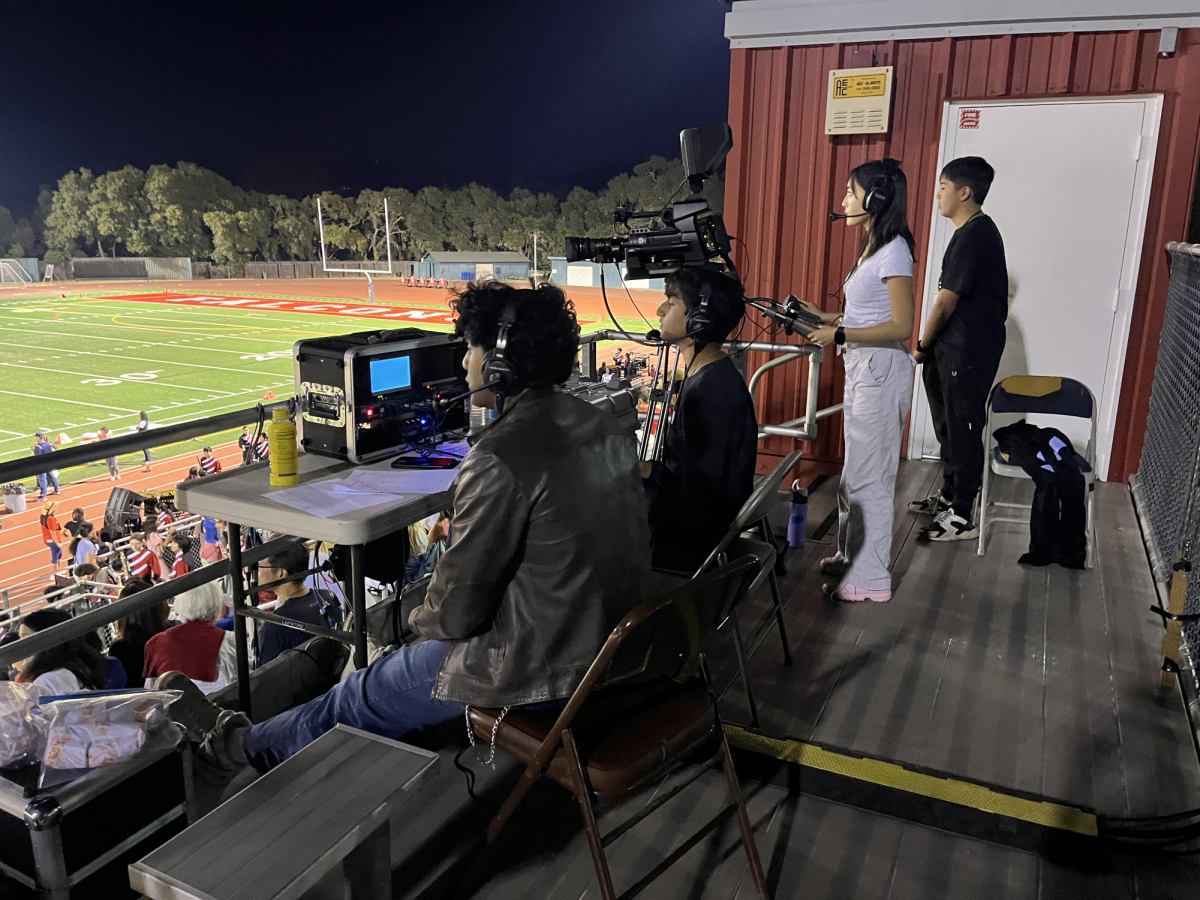Laughter rings from senior Alena Jarrett’s phone as she talks to her cousins. Although she speaks English to them, their replies come in Indonesian. Both parties have Google Translate open beside them.
For students like Jarrett, physical distance from relatives poses a significant challenge in staying connected. Her mother and family come from England while her father’s side of the family hails from Indonesia.
According to a study from the U.S. National Library of Medicine, proximity is the strongest indicator of contact between relatives, and relates closely with “higher quality of ties and more assistance.” A survey from the American Association of Retired Persons said approximately 33 percent of people say distance negatively affected their relationships with family.
Even though the language barrier between Jarrett and her relatives living in Bali, Indonesia, hinders their communication, the 8,504 miles in between them poses an even greater challenge. She has met them only once because of the expensive flights, many of which exceed $1,000 and take 24 hours.
“I desperately want to see them, but it’s really hard to,” Jarrett said.
To bridge the distance, Jarrett calls the Indonesian side of her family — her two grandparents, 10 aunts and uncles and approximately 20 cousins — on birthdays and trades postcards with them. Still, she said the language barrier and distance makes them more like acquaintances than family.
“It’s really weird knowing there’s an entire part of your family in another country that you know relatively little about,” Jarrett said.
To stay in touch with her relatives in England, Jarrett calls them via Facetime several times a month. However, her primary form of communication is through packages and postcards.
“My family always says it’s really nice to receive mail, so we’ve always made sure to do that,” Jarrett said. “They’ll send clothes or food that I miss from England for ones they want from here. My cousins are learning to read and write in English, so I’ll send them postcards and tell them about my day, which they really like.”
Although Jarrett’s European relatives live in Scotland, Ireland and England, Jarett and her mom try to reunite with them in London during Christmas, the only time of year her whole British family is together. Because of the expensive prices of plane tickets and the fact that European schools and American schools have different holiday schedules, coordinating these annual gatherings is difficult; however, the family “always tries to make it work,” Jarrett said.
Before the holiday celebrations begin, Jarrett said that she and her British family undergo a period of “adjustment” for the first day or two of their two-week gathering as they try to catch up on each other’s lives and adapt to each others’ lifestyles. Seeing them only once a year, Jarrett said that every time she visits, she feels that “they’ve changed so much.”
“There’s definitely a lot of tension because we want to be happy and peaceful, but we forget about the differences in preference we have, which makes things difficult,” Jarrett said. “Little things like when to eat or what to watch on TV escalate into arguments sometimes.”
Other students, like junior Juan Vintimilla, believe distance has little impact on their relationships with relatives. Vintimilla, who moved from Colombia in the sixth grade, regularly contacts his relatives via Facebook and visits them every summer for a week. Unlike Jarrett, he said his adjustment period takes less time.
“When I first see them, I’m not as close to them as I was before, but after a bit, we go back to being where we were with our original connections to each other,” Vintimilla said.
He added that since his family mostly celebrated U.S. holidays even when they lived in Colombia, he does not face a problem with traditional holidays and family gatherings. They would only host family gatherings during some birthdays, but even so, Vintimilla said those occasions did not occur frequently.
For his part, senior Shiv Gupta said technology helps with his relationship with his relatives in India. Despite being a third-generation Indian-American, Gupta communicates with his cousins, aunts and uncles almost daily through phone calls and WhatsApp in a mixture of English, Hindi and Punjabi.
“WhatsApp is the biggest thing,” Gupta said. “There are around 10 WhatsApp groups of different group chats, different categories of cousins, aunts, uncles, aunts and uncles — it’s a whole tree. We’re planning a wedding right now, so it’s crazy; there’s all sorts of communication.”
Although traditional Indian holidays, like Diwali, typically involve large family gatherings, Gupta said he and his overseas relatives compensate for their lack of proximity by sharing pictures of their individual celebrations in their group chats and using phone calls to wish each other well. In the U.S., Gupta and his immediate family celebrate festivals with family friends.
Jarrett, however, who communicates with and sees her relatives less frequently, admitted that living away from most of her family often makes her feel disconnected from them.
“You feel a lot more alone,” Jarrett said. “When I see my friends here have Thanksgiving with their families or random family outings, I wish that I had that because it’s just me and my mom here.”
Despite their differing relationships with their overseas relatives, Jarrett, Vintimilla and Gupta agreed that distance ultimately makes the time they get to spend with their families more special.
“Face-to-face communication obviously doesn’t happen as much because it costs a lot of time and money to see your relatives,” Gupta said. “But the positive is that when you do get to see each other, there’s a lot more quality information that’s passed between you while you catch up with each other. Your interactions become a lot more meaningful that way precisely because you don’t see each other on a day-to-day basis.”

























